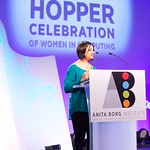November 23rd marked the official launch event for Waterloo’s i3 Challenge, a cross-campus competition to give the South Campus Gateway a makeover. The i3 idea started only this fall when some grad students and professors started talking with administration about what our campus lacks and how it should reflect the innovative minds that Waterloo houses and the programs that attract even the best to Waterloo. The i3 Committee consists of graduate students, faculty, staff, representatives from the Provost’s Office and the Marketing Office. The initiative has received all-around support from the administration, not to mention $100,000 allocated to fund the winning idea. Of course, this money is for the project, not for celebratory victory beverages, but the design and competition experience (and the glory) should be incentive enough. The committee is also completely volunteer-based, brought together by a mutual desire to improve our lacklustre campus.
Details about the i3 Challenge can be found at innovate.uwaterloo.ca (and also in the last issue of The Iron Warrior), but here’s a quick recap. Innovate: groups of 3-6 will design a creative South Campus makeover that reflects UW’s favourite word. Integrate: teams must have students from diverse programs and collaborate across campus and the community. Implement: the winning team’s design will include a short-term plan to be implemented immediately, a 3-year vision, and a 10-year vision to work towards. Teams will pitch their visions by next February, and winners who proceed to further rounds will come up with more comprehensive plans. The whole competition will wrap up by May 2011, and the plan is to break ground by Fall 2011 to welcome new students!
Yes, it’s ambitious, but isn’t that one of UW’s strengths? What other university would challenge its own students to design an ideal campus for themselves? These decisions are usually left up to hired planners, maybe with a couple of student surveys. Well, the current South Campus Gateway is a testament to how that can go wrong, and this challenge is a testament to how UW perhaps has more faith in its students than any other average university. Forgive me for sounding patriotic, but the fact that this competition really stresses cross-faculty collaboration makes me buy into the words on those laser-logo banners all around campus. You don’t have to be in planning, or civil, or architecture to have solid design ideas. As i3 committee member Dr. Jeff Casello put it, “everyone is a user of the space.” Ergo, a good design uses everyone’s input.
About 50 students from all faculties made it out to the launch at Bomber for a brainstorm session. The crowd was mostly planning and environment students, but the word is spreading by mouth and by social media. If you’re still interested in taking part, team registration doesn’t close until December 15, so there’s lots of time to pull a team together. Some of the main concerns about the South Campus Gateway at University Ave. and Seagram Dr. were lack of Waterloo identity, lack of visibility from the street, and a general visual disappointment. Oh yeah, and whose idea was it to have a 4-lane street coming into a 3-way stop intersection just meters from a bus bay? Maybe someone who hates pedestrians and cyclists. On the other hand, UW strengths voiced in the brainstorming were our history of pioneering new disciplines, our intellectual property policies that have led to successful start-ups, and our growing international reputation for, yes, innovation. These are all great things to have reflected in the makeover design.
Other important features of the makeover would be to consider UW’s existing Campus Master Plan and its signs and way-finding project (thank goodness). Street presence on University Ave. and some connection to Waterloo Park are also important, because as is, campus is isolated by vast concrete parking lots and random shrubbery. Although this isn’t strictly an engineering competition, is draws a lot of parallels when it comes to designing within mandated constraints, identifying root causes of problems, and addressing them with innovative solutions. There is a short-term and a long-term design component – another important consideration in an engineering situation. Where i3 differs is that it’s less about designing a specialized aspect of the space, like an efficient intersection or an SCH replacement, and more about designing how the space works as a whole.
No matter if you’ve been here for one term or for five years (or even seven), you must have an opinion about the intersection in front of SCH. Maybe you squared off with a goose while biking through hordes of people at the bus stop, or maybe you first kissed your crush on the staircase in the romantic ambience in front of the flickering yellow lamp after Semi. Good or bad, the South Campus Gateway is an important space that isn’t living up to its full potential. Even if you don’t want to compete in i3, it will still be a cool competition to follow, so look out for project pitches in SCH this winter. A phrase repeated over and over at the launch was “Think big. Think creative.” If all goes well with i3, people just might believe that when they first walk, bike, or drive onto campus.




Leave a Reply